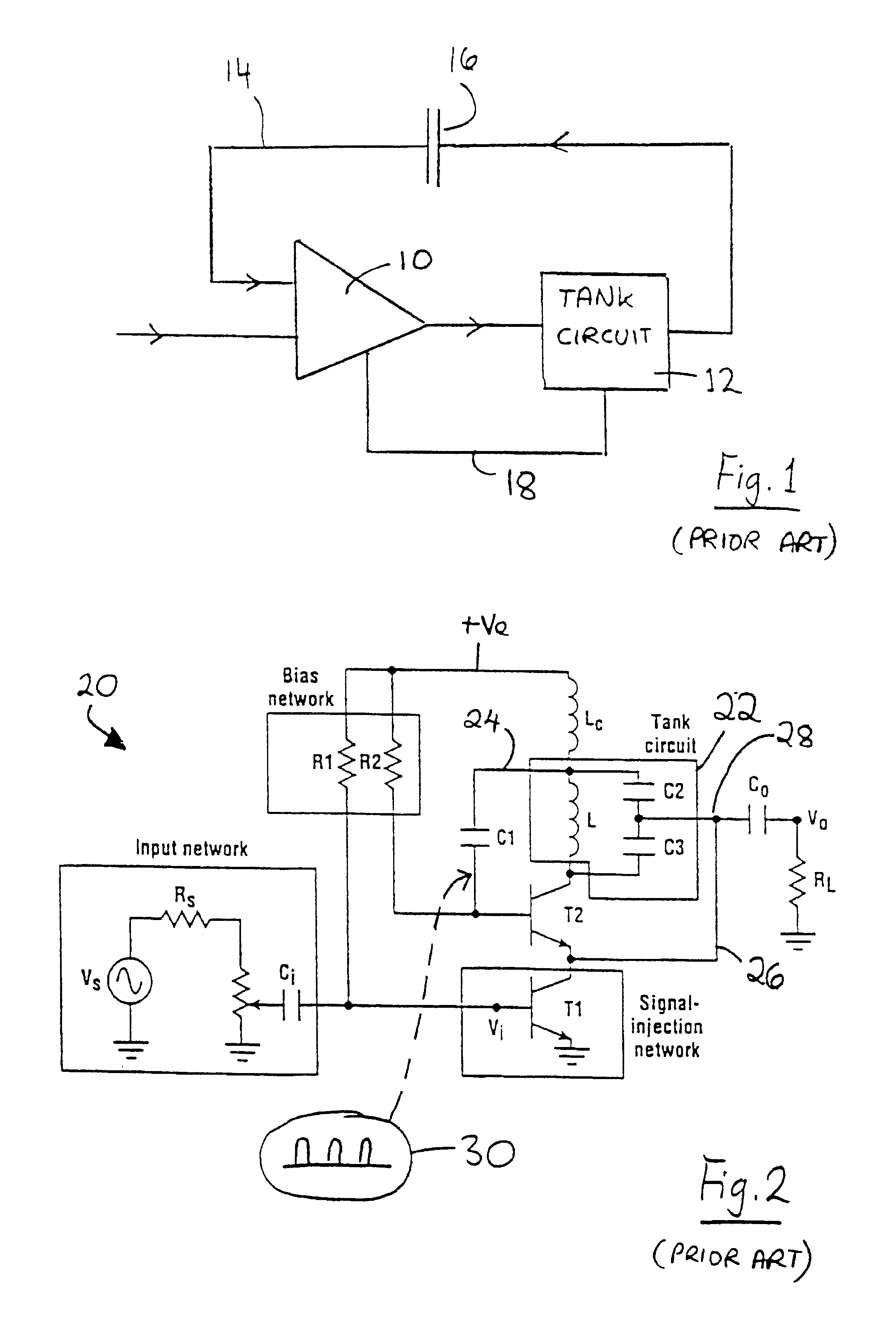Synchronous oscillators
a technology of synchronous oscillators and oscillators, applied in the direction of pulse generators, pulse techniques, digital transmission, etc., can solve the problems of noise rejection, inability to compensate for losses, and inability to match
- Summary
- Abstract
- Description
- Claims
- Application Information
AI Technical Summary
Benefits of technology
Problems solved by technology
Method used
Image
Examples
first embodiment
The circuit of FIG. 10 may provide the same performance enhancement as the preceding embodiment, namely an increase in bandwidth, improved input sensitivity, improved noise rejection, and a reduction in jitter. In the circuit of FIG. 10, frequency multiplication by a factor of three occurs (i.e. domination by the second harmonic), instead of times four as in the
second embodiment
The second embodiment is also suitable for use in QPSK modems. For example, a 48 MHz oscillator frequency can automatically be converted to around 140 MHz IF frequency.
In the first and second embodiments, the synchronous oscillators are not phase corrected. However, if desired, the same negative impedance conversion feedback may be used in a coherent phase synchronous oscillator. For example, FIG. 11 shows such a coherent phase oscillator similar to FIG. 5, with the addition of the third feedback path 40 employing the inductor L3 and the capacitor C4. Such a circuit may provide the same enhancement of performance resulting from NIC, but with the addition of coherent phase. In standard circuits, no phase correction is available.
The above principle of NIC can be used in transmission lines, to increase their functional properties, in frequency, tracking range, noise rejection, and also provide better frequency stability and lower phase jitter. Also, along the same lines, it can be used...
PUM
 Login to View More
Login to View More Abstract
Description
Claims
Application Information
 Login to View More
Login to View More - R&D
- Intellectual Property
- Life Sciences
- Materials
- Tech Scout
- Unparalleled Data Quality
- Higher Quality Content
- 60% Fewer Hallucinations
Browse by: Latest US Patents, China's latest patents, Technical Efficacy Thesaurus, Application Domain, Technology Topic, Popular Technical Reports.
© 2025 PatSnap. All rights reserved.Legal|Privacy policy|Modern Slavery Act Transparency Statement|Sitemap|About US| Contact US: help@patsnap.com



